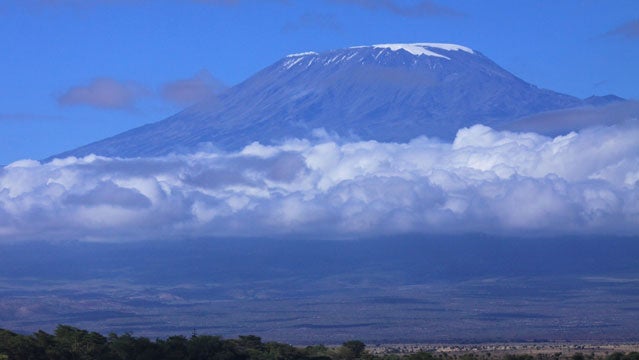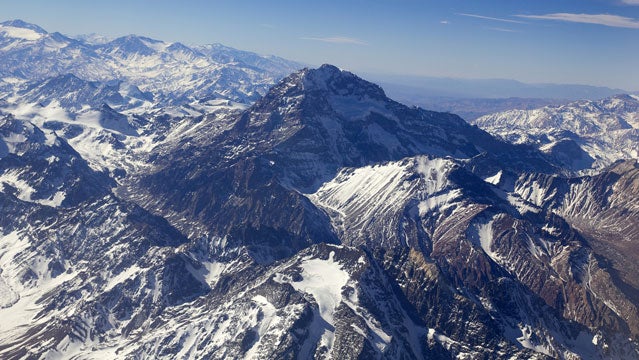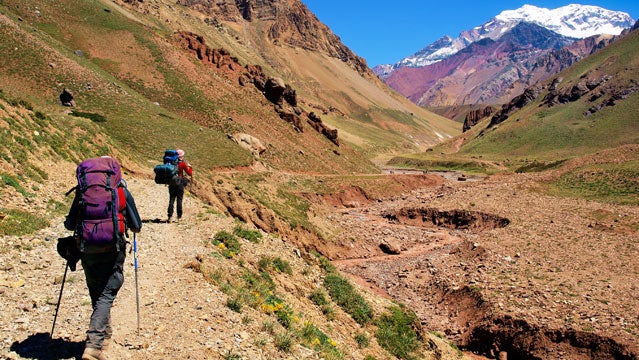Climbing the highest peak on one or more of the world’s seven continents is a worthy goal—and I understand why you, and so many other people, gravitate to 19,340-foot Mount Kilimanjaro in Tanzania and 22,840-foot Aconcagua in Argentina
The climbs on the main routes to the top of each are generally considered “long walks” rather than actual mountaineering expeditions. Yet they can still pose considerable challenges. Both hikes are exhausting and will take multiple days to complete. Plus, you’ll be battling against the unpredictability of the weather on them, the thin air of high elevation, and the potentially dangerous effects of altitude sickness. So, there’s no guarantee you’ll reach the top of either one.
But which one would I recommend? Not so fast. Let’s go through the pros and cons so you can make your own semi-informed decision.
To Climb: Kilimanjaro

TREK DURATION: 5-6 days
PROS: With tea stands along the way for drinks and snacks and huts for spending the night, the hike up the popular Marangu Route is definitely the most luxurious, foreign, high-altitude adventure you’ll find. Another bonus: most reputable guide services on the mountain bring along a team of surprisingly excellent cooks to prepare your meals and a group of porters for your gear. Kilimanjaro is easy to access, with the trailhead only about an hour from the local airport, and reaching its snow-covered volcanic cone really will leave you breathless—and not just because of the thin air.
CONS: The crowds. Roughly 15,000 people reach the summit each year, and you’ll feel like they all reached the summit at the same time as you. This is not a solitary experience, nor is it a technical one in any way (That’s either “pro” or “con,” depending on what you’re looking for.)
SUCCESS RATE: The general statistic used says that 40 percent of climbers make it to the top.
GUIDE SERVICE: Of all the great guide services on Kilimanjaro, might be the best. Its success rate is close to 90 percent, and though its treks are longer and pricier, they avoid the jam-packed Marangu Route. Climb prices start at $4,000.
To Climb: Aconcagua

TREK DURATION: 18 to 21 days
PROS: This jagged, humpbacked 22,840-foot peak is the tallest mountain in the Western and Southern hemispheres—or anywhere else outside of Asia. Yet, if you follow the popular Normal Route on the north side, you can make the long slog to the top without using the crampons and ropes you should pack.
CONS: On the frigid summit, the weather can change at any moment—and the strong winds can be brutal. When you’re climbing well above 20,000 feet, the sense of vulnerability and exposure is almost as strong as the ultraviolet rays beating down on you through the thin, dry air.
SUCCESS RATE: No concrete records are kept, but the average seems to be around 50 percent of climbers reaching the summit.
GUIDE SERVICE: Mountain Guides International has been leading climbers to the top of Aconcagua with relatively high success for more than two decades. Its 20-day trips limit the number of guests to six to eight people, accompanied by two guides. Price: $4,400.
THE CHOICE: Aconcagua. Despite all the reasons to climb Kilimanjaro—its scenery, its beauty, a chance to see the famed snows frosting its summit before global warming melts them—there’s something about some day being able to brag to your grandkids (and yourself) that you climbed a 22,000-foot-plus mountain peak. Aconcagua takes nearly two weeks more time to climb, so it’s definitely a much bigger time investment, and the weather conditions definitely can get more extreme. But the payoff of peering down at the surrounding, 20,000-foot peaks of the Andes makes it all worth it.


